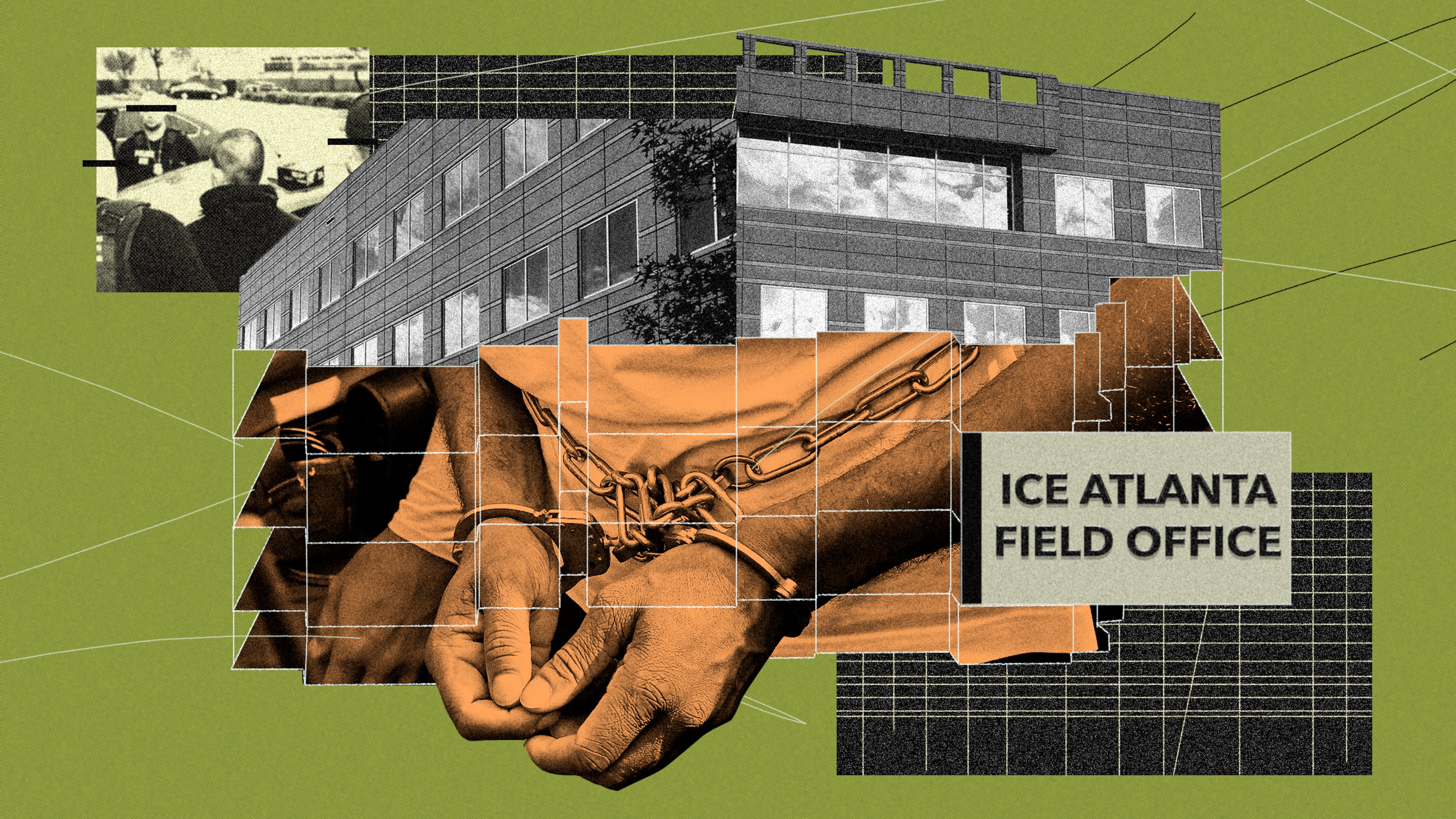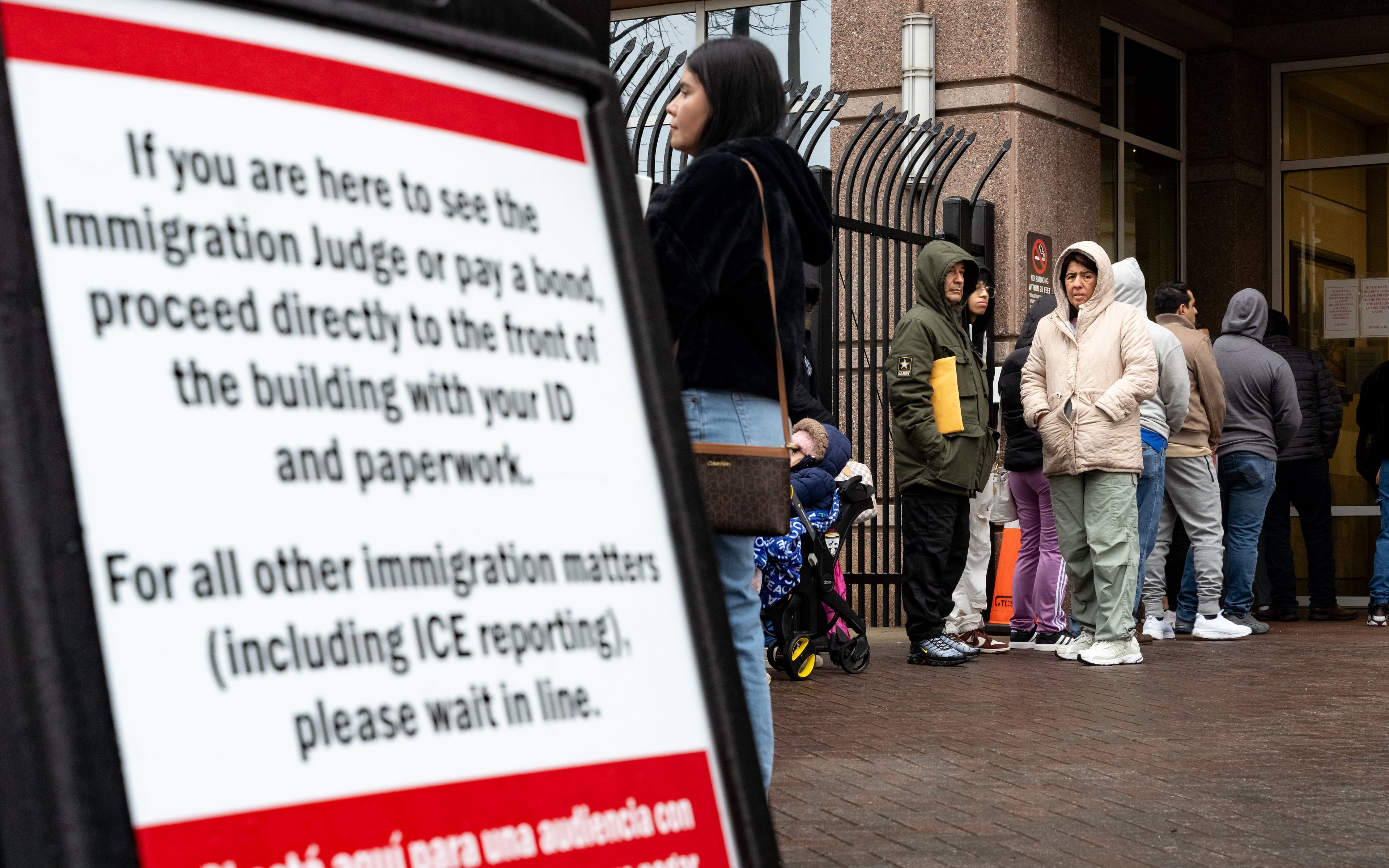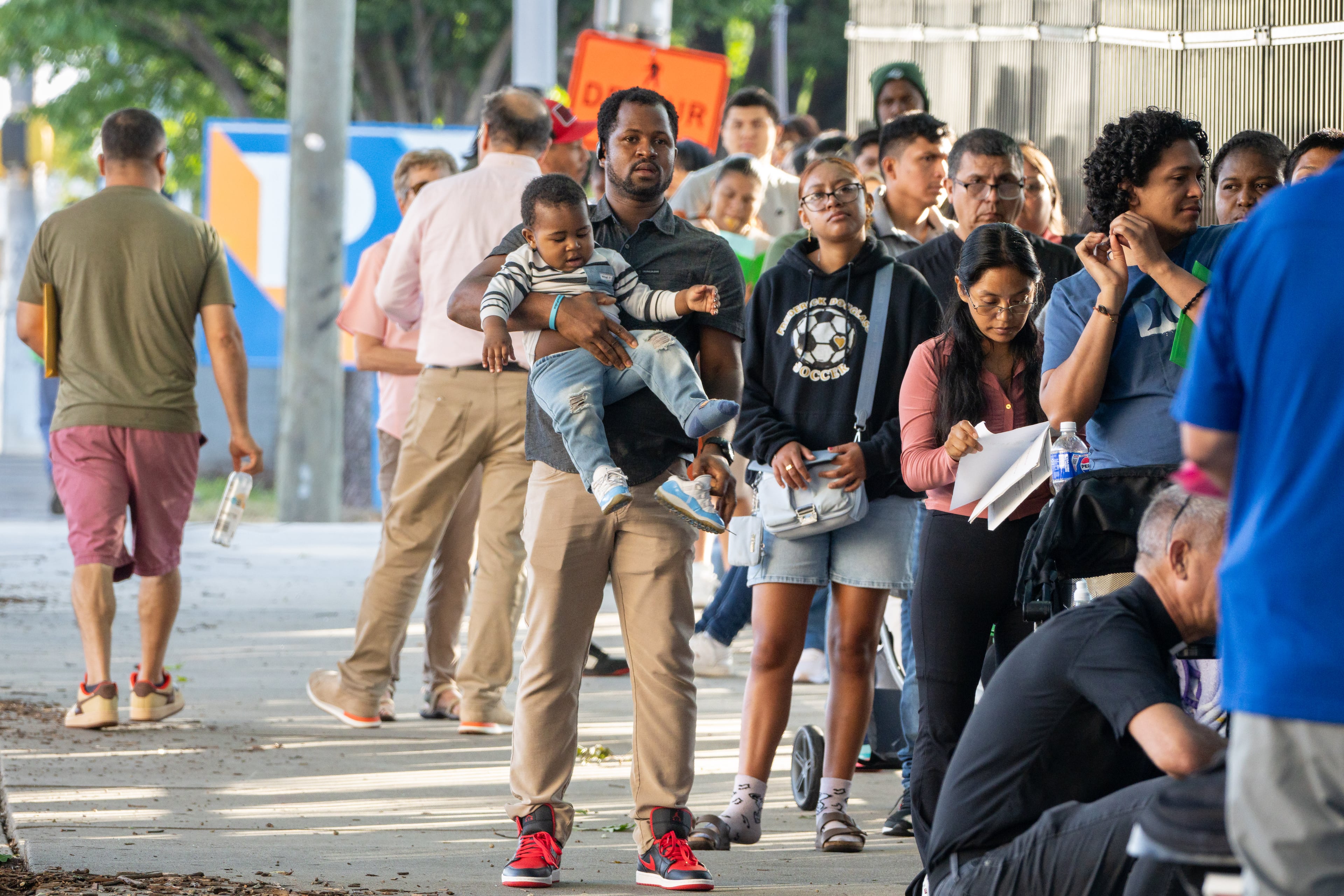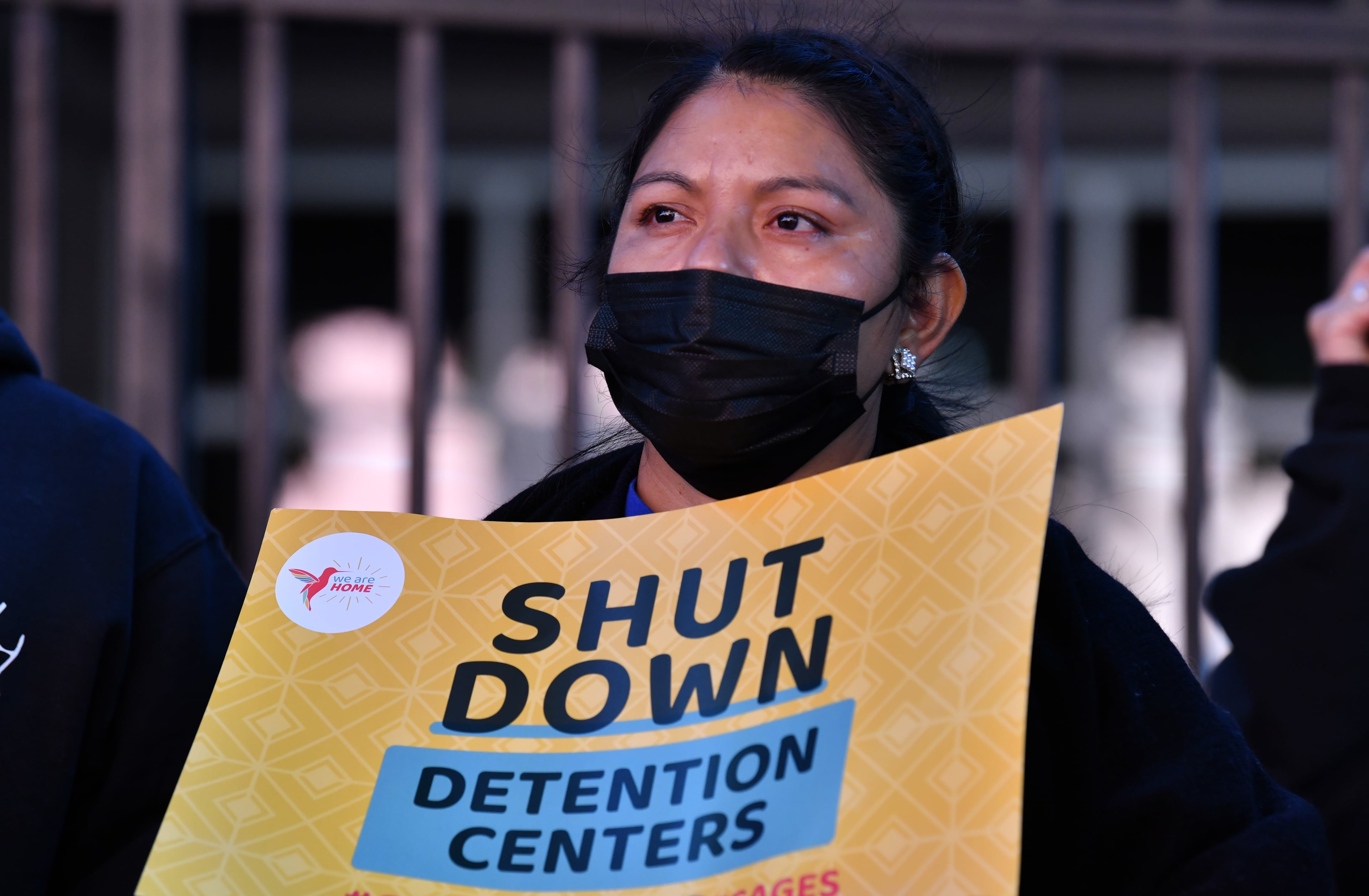ICE detaining immigrants for long periods in Atlanta field office basement

In recent years, immigration detention in Georgia has been a distinctly rural phenomenon.
The hulking facilities that have made the state a national leader in the lockup of immigrants sit out of public view, in small towns hours removed from metro Atlanta and the other urban communities at the center of immigrant life.
But immigration detention is now also happening on a large scale in downtown Atlanta, federal data shows — and it’s exposing immigrants to conditions that fail to meet government standards for safety, hygiene and access to legal resources, according to immigration attorneys interviewed by The Atlanta Journal-Constitution.
As Immigration and Customs Enforcement arrests have spiked and bed space has dwindled at detention centers, the agency has turned to detaining immigrants for long stretches in the basement of its Atlanta field office, a facility that traditionally served only as a holding area.
In addition to immigration attorneys, the AJC spoke to advocates, family members of detained immigrants and a man currently in ICE custody who are all familiar with conditions inside Atlanta’s ICE office, located at 180 Ted Turner Dr.
They describe a facility that does not have the space or amenities to hold people overnight: no beds, no showers, and no opportunity to receive visits from loved ones or from attorneys — a situation that may be exposing immigrants to worse conditions than those found in Georgia’s ICE detention centers.
One attorney said her client, a nursing mother, spent nine days sleeping on the floor at the Atlanta field office’s holding room. Another said she is representing a man who was detained at the field office for a weekend, where he had to sleep next to an open toilet.
From September 2023 through Donald Trump’s return to the White House on Jan. 20, 2025, only eight individuals spent more than 24 hours at the Atlanta ICE field office’s holding room.
In the past six months, that number ratcheted up to about 1,200, according to federal data on ICE book-ins obtained by the Deportation Data Project. The project, a group of academics and lawyers, collects and posts immigration enforcement datasets obtained through Freedom of Information Act requests.
Not only are more people being routed through the Atlanta field office, but a greater share of them are held there for extended periods of time.
So far during the second Trump administration, roughly 1-in-5 people who came through the Atlanta ICE field office spent 24 hours or more detained in its holding room — 1,239 cases in all.
According to ICE’s own guidance, no detainee may be held in a holding room for more than 12 hours.
In a report following a 2023 government audit, the Atlanta field office’s holding facility is described as being located in the building’s basement, with a capacity for 125 detainees. It is made up of four multiple occupancy holding cells, two single person cells and an interview room.
This summer, there were regularly 50 to 70 people at a time detained in the downtown Atlanta facility overnight, the federal data shows.
“I would imagine at some point in the past they did some overnight stays, but this is the first time where it seems to be ramping up to the point where they can’t hide it,” said Anton Flores-Maisonet, who helps lead Casa Alterna, a local nonprofit that supports immigrants facing deportation.
In recent months, Casa Alterna volunteers have coalesced in front of the Atlanta ICE field office, where they meet people attempting to drop off supplies for loved ones inside.
“We’re seeing a lot of improvisation, but you can’t improvise with human life,” Flores-Maisonet said of the ICE facility.
In a statement, Tricia McLaughlin, assistant secretary at the Department of Homeland Security, said detainees at the Atlanta ICE field office receive three meals a day and have access to phones, showers, legal representation, blankets, and medical care.
She noted that the tax and domestic policy bill passed by Republicans earlier this year provides funding to expand the ICE detention network, “which means detainees are being processed and transferred quickly at the Atlanta Field Office.”
“When will the media stop covering sob stories of illegal alien processing and detention centers and start focusing on the victims of illegal alien crime?” McLaughlin said.

In the first six months of the Trump administration, most people were moved from the field office within one or two days, but some spent weeks or months at the facility, federal data shows.
There were more than 300 detentions where people were kept there between three and five days. More than a dozen people spent over a week there, with four spending over a month at the holding facility, according to the data.
The longest detention at the Atlanta field office under Trump belonged to a 42-year-old Guatemalan national with no felony charges. His detention in Atlanta leading up to his deportation spanned nearly three months, from late February to late May.
Tucker-based immigration lawyer Nicole Kozycki told the AJC that one of her clients, a woman from Mexico, spent nine days detained at the field office in August. A mother of two, she was nursing when she first entered ICE custody.
For nine days, Kozycki said, her client slept on the floor of a windowless room — a setup that triggered a panic attack.
“Why keep her there under such circumstances? Every single day was agony,” Kozycki said. The field office “is not meant to house people. It’s meant for processing. They don’t have the facilities to actually keep people there.”
According to ICE, “bunks, cots, beds and other sleeping apparatus are not permitted” inside hold rooms like the one at the Atlanta field office.
Kozycki’s client was eventually transferred to South Georgia’s Stewart Detention Center, one of the nation’s largest ICE facilities.
Georgia immigrant advocates have long held that conditions inside Stewart are substandard, allegations that have become louder as the facility exceeded its capacity earlier this year. In 2023, government inspectors wrote that they had identified code violations at Stewart that compromised the “health, safety, and rights of detainees.”
But Kozycki said that, for her client, detention in Stewart was a marked improvement.
“Stewart was like the Hilton. Stewart was like: ‘I have a bed, and I have clean clothes, and a shower,’” Kozycki said. “There’s a commissary where you can put money in somebody’s account.”
The field office is “not set up that way,” she said.
All facilities housing ICE detainees must comply with federal standards. There are rules with which facilities like Stewart must abide in respect to staffing levels, use of force, access to medical and mental health care, food service and more.
There seems to be no equivalent regulatory framework covering ICE field offices.
“The field office seems to fall in this crevice of intake where there are no standards for detention, because they’re not supposed to be detaining people there,” Kozycki said. “It didn’t feel like they had any rules that they needed to live by.”
In late August, the AJC visited an immigration attorney’s office in Gwinnett County to join a phone call with a Guatemalan man held at the Stewart Detention Center.
The man had been detained for a day in July at ICE’s Atlanta field office. He did not wish to be identified because he remains in ICE custody with an active petition seeking relief from deportation, and fears retaliation.
The law office representing the Guatemalan national also requested anonymity because it could lose the ability to speak on the phone with clients detained at Stewart, if it became known that it allowed a reporter on a call.
According to the Guatemalan national, he was held alongside 60 people in a cramped holding room. He said he was taken aback by the stench, a product he said of the lack of showers and leaking from a nearby toilet.
He said he was given three burritos for the day he spent there. He said he did not receive toothpaste or other toiletries. More frustrating for him was his inability to see a doctor or a nurse for an injury he said was suffered while in shackles during transport to the field office.
With no beds inside the field office, the man said he spent the night sitting on the concrete floor, which he believes worsened his injury. He said his request for medical attention was ignored. According to his attorney, the man was taken to the hospital for emergency treatment after being transferred to Stewart.
Luis Alemany, an Alpharetta-based immigration attorney, said one of his clients was detained in the field office for two nights in late July.
“I’ve been doing this work for 19 years. I’ve never had a client be detained there before,” he said. “I don’t understand how they’re stuffing people in there.”
The two busiest nights at the Atlanta facility were June 25 and 26, when nearly 100 people were detained there as of midnight, the federal data shows.
During the last 16 months of the Biden administration, the average stay at the Atlanta ICE field office was a little under 5 hours. Under Trump, that average time nearly quadrupled to almost 19 hours.
‘I hope that we don’t have some calamity’
ICE’s outpost in downtown Atlanta, located around the corner from the Greyhound bus station, is a brown office building surrounded by black metal fencing. Early on weekday mornings, a line tends to form near the front entrance and snake around the block.
These are immigrants who come from across the state for recurring check-in appointments with ICE officials, or for immigration court hearings. Under Trump, officials have arrested some of the individuals who show up to comply with their reporting requirements or attend court.
The sidewalk in front of the field office is also go-to gathering spot for groups protesting U.S. immigration policy. The most recent rally in mid-September was a show of support for a Gwinnett County barber and double amputee who faces deportation to Liberia.

The proliferation of overnight stays inside the downtown facility’s hold room is likely a symptom of overcrowding at ICE’s detention centers, as immigration arrests have increased in recent months to meet aggressive quotas.
Last month, the Trump administration set a record high of more than 60,000 people in immigration detention, up from about 39,000 in January.
Sarah Owings, an immigration attorney based in Atlanta, represents a man who was detained for three days at the field office in mid-August. She compared ICE’s current approach to detention with an episode of the sitcom “I Love Lucy,” where the protagonist takes a job at a chocolate factory.
“She starts by being able to put all the chocolate in the box as it comes down the conveyor belt, but then they speed it up, and by the end, she’s stuffing it in her bra and in her mouth, and anywhere she can put it,” Owings said.
“That’s what ICE is doing with people. They don’t have the ability to put them in places that are appropriate at the rate that they are seeking to detain them,” Owings said. “They don’t have the capacity for any of it. And so, instead, they’re just kind of shoving them wherever they can to make it work.
“It’s really unfortunate that it’s come to this, and I hope that we don’t have some calamity.”
Reports of prolonged detention in alarming circumstances have also emerged from ICE holding facilities in cities including Baltimore, Burlington, Massachusetts, New York City, and San Francisco.
In New York, a federal judge ordered the Trump administration to make improvements at ICE’s Manhattan field office, where migrants were being held in crowded and foul conditions, according to a lawsuit filed by an individual detained there. The judge wrote that he was taking action to shield detainees from possibly “unconstitutional and inhumane treatment.”
The Manhattan field office was one of just four ICE holding facilities nationwide to have registered more overnight stays under Trump than Atlanta, federal data shows.
According to Kozycki, the increase of detention in underequipped facilities could motivate some immigrants living in the country illegally to self-deport.
“I do think I have clients who are more likely just to leave because they don’t want to be arrested by ICE, because of these horror stories about the conditions when (they’re) arrested,” she said. “The immigrant community, they talk, they talk to each other. And I do think that there are people who are like: ‘I’m just not going to risk it.’”
Editor’s Note: This story has been updated to add a statement from the Department of Homeland Security.




